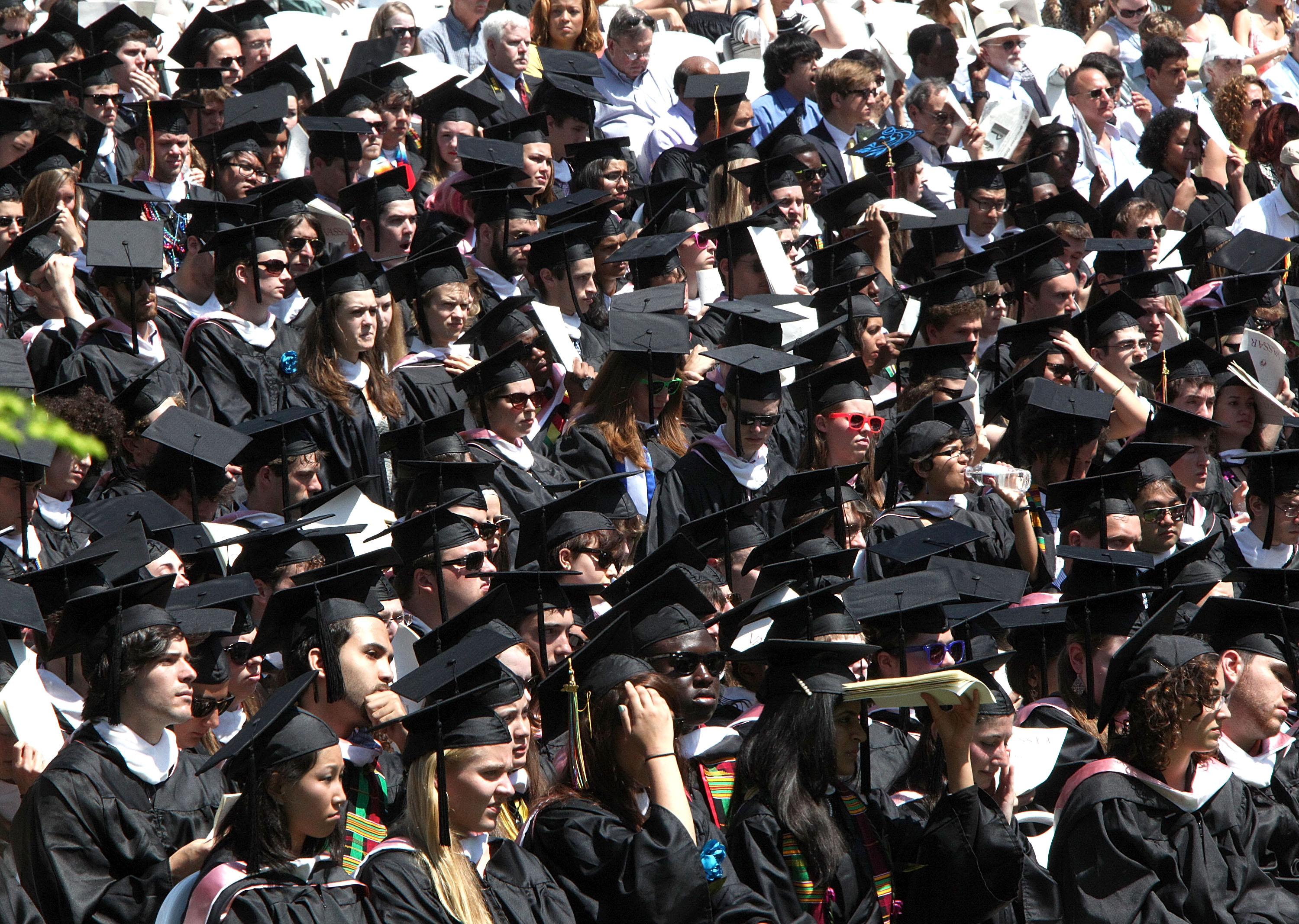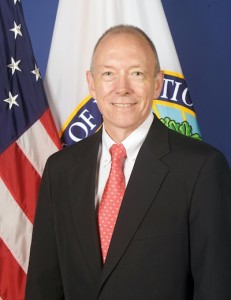
Photo of 2012 Vassar College commencement by Paul Zimmerman/Getty
Images.
This summer, the PBS NewsHour’s Rethinking College
series explored the changing landscape of American higher education.
Recently, Ted Mitchell, under secretary of education, sat down with the NewsHour to talk about the recent push for experimentation
with competency-based college degree programs, the pending federal college rating system, concerns over growing student debt
and other issues we examined.
As the third-highest ranking federal education official, Mitchell oversees the Obama administration’s higher education
initiatives. He was formerly president of Occidental College, dean of the School of Education and Information Studies at the
University of California, Los Angeles, and professor and chair of the Department of Education at Dartmouth College. Before
joining the Department of Education, he was CEO of the NewSchools Venture Fund and president of the California State Board
of Education from 2008 to 2010.
When it comes to the push for innovation in the area of competency-based
college degree programs — degrees based more on demonstrated skills than time in class — how do you balance
innovation and ensuring that students are earning credentials that are valued in the labor market?

Ted Mitchell, under secretary of education. Photo courtesy
of: U.S. Department of Education.
I do worry about that. I think that it’s a tension we’re increasingly familiar
with, whether it’s with competency-based education or traditional education. It’s the tension between what students
learn or believe they’re learning and what they’re demonstrating in the workplace. I think competency-based education has
an opportunity to shorten that cycle, because of the specificity of the competencies that students are learning, their attachment
to very specific tasks or jobs in the marketplace and then feedback about whether students are learning those or not. It’s
harder to do with a history major than it is to do with someone who is actually certified with having a competency, for example
in critical problem solving skills.
Is there a danger that these narrowly-focused credentials won’t hold their value as the marketplace changes?
There are two worries there. One is the old vocational worry, where you’re training people for yesterday’s job. And I think
that with active participation of employers in the design of these programs, we’re getting employers who are looking five
or 10 years out, not just looking to fill five sales positions tomorrow. So I think keeping the conversation forward looking
is important, and that will happen at the institutional level. The second issue is that I think that we need to be careful
that in modularizing or compartmentalizing some of these very specific competencies that we’re not losing the overall arc
of higher education, which is a value that is transformative in lots of ways, not just the accumulation of skills.
The administration has a stated goal of making the United States the country with the world’s highest degree attainment
again. When you look at the numbers, the countries that outperform us in degree attainment are doing it with vocational
degrees. Is it a matter of attracting more Americans to these programs or helping them be more successful? What is the
department doing in these areas?
Yes, we lag our peers in helping adult students develop skills that are valued today and tomorrow in the market place.
Institutions across the country are getting much better at it and are wildly successful. They have 80, 90 percent graduation
rates, 80, 90 percent placement rates. So we need to get the word out about the vitality and the vibrancy of those programs
and part of the word we need to get out is that these are not yesterdays “voc ed” programs, these are really high-tech
training programs that also involve the 21st Century deeper learning skills of collaboration, problem-solving, creative thinking
– the things that are needed all the way up and down the employment pipeline.
There is a glut of college rankings out there. How do you keep the
upcoming White House ratings system from just adding to the noise? At the same time, how do you make sure the information
is getting to lower-income, underserved communities that may not be tapping into the information that’s already out
there?
We start from the fundamental proposition that we need to play back to the American people the results of this incredible
investment that we make, that we all make, that you and I make, in higher education. So our responsibility, first and foremost,
is to play that back to the people.
We think that we can create a set of simple, stable, clear metrics that will cut through the noise and will not look to
differentiate (colleges) at the 93rd decimal point, but will just provide sensible, credible, clear information to families
and cut through the noise to help families and help the public get a better understanding of how that investment is paying
off for individuals.
Do you see families accessing and understanding the existing White
House College Scorecard information that’s out there now?
We do. Not to the extent that we would like. We would like there to be greater uptake with the Scorecard information and
with the financial aid shopping sheet. We need to do a better job promoting our own tools.
There’s been a fair amount of push back about whether the problem of student
debt has been blown out of proportion. For example, this
recent Brookings Institute report on the financial health of households with student debt. What’s your reaction
to that criticism?
I think that we need to be more careful about parsing the trillion dollars than we’ve been to date. I think it’s important
to recognize that big borrowers, in general, are borrowing for professional and graduate programs. A focus on undergraduate
student aid makes it look more manageable at a student level and at a national level.
The college investment continues to be one of the best investments an individual can make and we continue to believe and
believe strongly that it’s one of the best investments a society can make.
That’s not to say that we shouldn’t do everything in our power to make student debt more affordable and to lower the necessity
of students to take out large loans to pay for college. So we need to continue to work on lowering college cost, we need to
encourage states to up their investment in higher education and we need to do things like president has done increasing access
to income drive repayment programs that we think are going to provide a nice alternative to students who are struggling to
pay their debts.
Serving underrepresented, first-in-their family and other ‘non-traditional’
students can simply cost more. Is the push for greater efficiency and lower costs in higher education incompatible with
broadening access?
So it is a tension, and it’s clear that the rich supports that vulnerable student populations need increase costs at institutions.
That said, there are other places I think we need to challenge institutions to do more with less or simply take some things
out of the equation in order to, on net, reduce the total cost.
PBS NewsHour coverage of higher education is supported by the Lumina
Foundation and American Graduate: Let’s Make it Happen, a public
media initiative made possible by the Corporation for Public Broadcasting.
The post The
U.S. gov. wants you to get the most from your college investment appeared first on PBS
NewsHour.